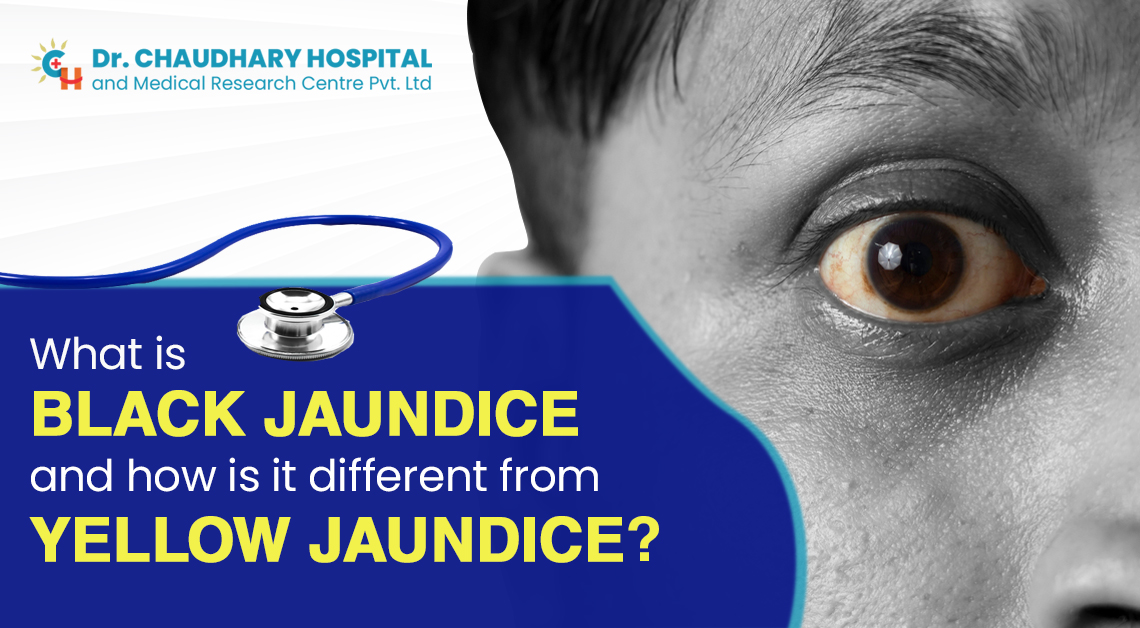In recent years, emerging infectious diseases have become a global concern. Among these, the Nipah virus has gained significant attention due to its potential for outbreaks with high mortality rates. Nipah virus infection is a zoonotic disease that can be transmitted from animals to humans. In this blog, we will delve into the symptoms of Nipah virus infection in humans, its risk factors, and preventive measures.
What is Jaundice?
Before we delve into the specifics of black jaundice and yellow jaundice, let’s first understand the common underlying causes and symptoms of jaundice. Jaundice occurs when there is an accumulation of bilirubin in the blood. Bilirubin is a yellow pigment that is formed during the breakdown of haemoglobin in old red blood cells. In a healthy body, bilirubin is processed by the liver, which converts it into a water-soluble form that can be excreted through bile and urine. However, if the liver is not functioning properly or there is an excess production of bilirubin, it can lead to the yellowing of the skin and eyes.
What is Black Jaundice?
Acute liver failure, often known as black jaundice, is a serious medical illness marked by a fast decline in liver function. The term “black jaundice” refers to the more severe form of the disease, whereas “jaundice” often refers to the yellowing of the skin and eyes as a result of elevated bilirubin levels. It necessitates quick medical intervention and care.
A type of jaundice known as Heidan illness (black jaundice) is brought on by persistent and chronic jaundice, frequently accompanied by blood stasis, damp-heat, etc. In Western medicine, the clinical signs of Heldan illness (black jaundice) are comparable to those of cirrhosis, which is brought on by a number of chronic liver conditions. The pathophysiology of Heidan disease (black jaundice), which is typically of the yin jaundice type, is primarily related to blood stasis and dampness stagnation, frequently with damp-heat residue.
What are the symptoms of Black Jaundice?
Jaundice itself is a symptom of an underlying medical issue rather than a standalone condition. The primary symptom of jaundice is the yellowing of the skin and the white part of the eyes (sclera), which occurs due to the accumulation of bilirubin in the body. Bilirubin is a yellow pigment that forms when red blood cells break down.
However, there are some specific symptoms associated with black Jaundice such as follows:
- Yellowing of the skin and eyes (jaundice)
- Abdominal pain and discomfort
- Nausea and vomiting
- Fatigue and weakness
- Confusion or altered mental state
- Dark urine and pale stools
- Swelling in the abdomen and legs
Conditions such as hepatitis, cirrhosis, gallstones, hemolytic anaemia, and more can lead to jaundice. If you or someone you know is experiencing symptoms of jaundice, it’s important to seek medical attention for a proper diagnosis and appropriate treatment.
What are the Causes and Risk Factors Associated with Black Jaundice?
The following are the causes of Black Jaundice:
- Viral hepatitis (such as hepatitis A, B, or C)
- Drug-induced liver injury
- Alcohol abuse
- Autoimmune hepatitis
- Metabolic disorders
- Wilson’s disease (copper accumulation)
- Hemochromatosis (iron overload)
- Infections (like Epstein-Barr virus)
- Herbal and dietary supplements
It can be more likely to occur if certain risk factors are present, such as a history of liver illness, excessive alcohol consumption, and certain genetic disorders.
Diagnosis of Black Jaundice
The diagnosis of Black Jaundice can involve a measure of steps such as:
- Assessment and review of preceding medical history
- Physical examination
- Blood tests
- Ultrasound & MRI
- occasionally liver biopsy
Determining the best course of treatment depends on a timely and accurate diagnosis.
Treatment of Black Jaundice
Medical Attention
Black jaundice episodes require immediate medical care. To handle difficulties and keep the patient stable, hospitalization could be required. Treatment options may include corticosteroids, antiviral drugs, or other particular medicines, depending on the underlying reason.
Lifestyle Changes
Black jaundice patients frequently need to make considerable lifestyle adjustments. This can involve avoiding alcohol, maintaining a healthy weight, and rigorously adhering to medical advice.
Dietary changes
A balanced diet is crucial for supporting liver health. Try to include the following food in your diet:
- High-fiber foods – fruits, vegetables, whole grains
- Lean protein sources – chicken, fish, legumes
- Healthy fats – avocado, nuts, olive oil
Try to avoid the following:
- Fried and processed foods
- Excessive salt and sugar
- Alcohol and high-sugar beverages
What is Yellow Jaundice?
Yellow jaundice, also known as icterus or hyperbilirubinemia, is the most common form of jaundice. It is characterized by the classic yellow discoloration of the skin and eyes. Yellow jaundice can be caused by various factors:
Liver Diseases –
Conditions such as hepatitis, cirrhosis, and liver cancer can impair the liver’s ability to process bilirubin, leading to its accumulation in the bloodstream.
Excessive Hemolysis –
Increased breakdown of red blood cells (hemolysis) can overwhelm the liver’s capacity to process bilirubin, leading to its elevation in the blood.
Biliary Obstruction –
Blockages in the bile ducts, whether due to gallstones or tumors, can prevent the proper flow of bile and bilirubin, resulting in jaundice.
Conclusion
In conclusion, while yellow jaundice is a well-recognized medical condition characterized by the yellowing of the skin and eyes due to elevated bilirubin levels, black jaundice, or acute liver failure, is a severe condition that demands immediate attention. A medical professional should thoroughly evaluate any discoloration of the skin that appears black, as it could be a call for serious medical treatment.
Black jaundice’s symptoms must be identified, medical attention must be sought promptly, and essential lifestyle adjustments must be made for a successful course of therapy and recovery.
Remember, accurate medical information is crucial for making informed decisions about your health. Always consult reliable sources and healthcare professionals for accurate information and guidance.


